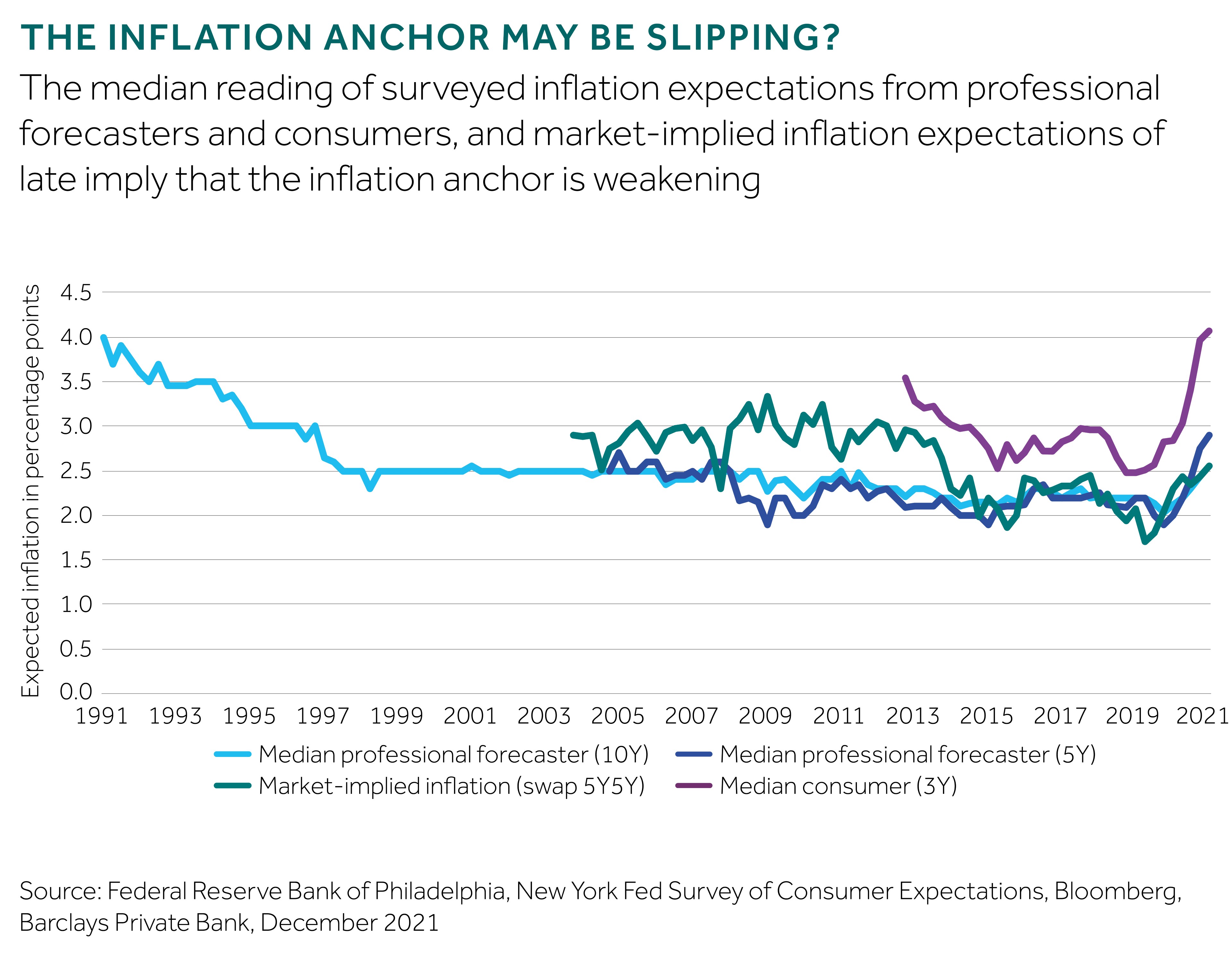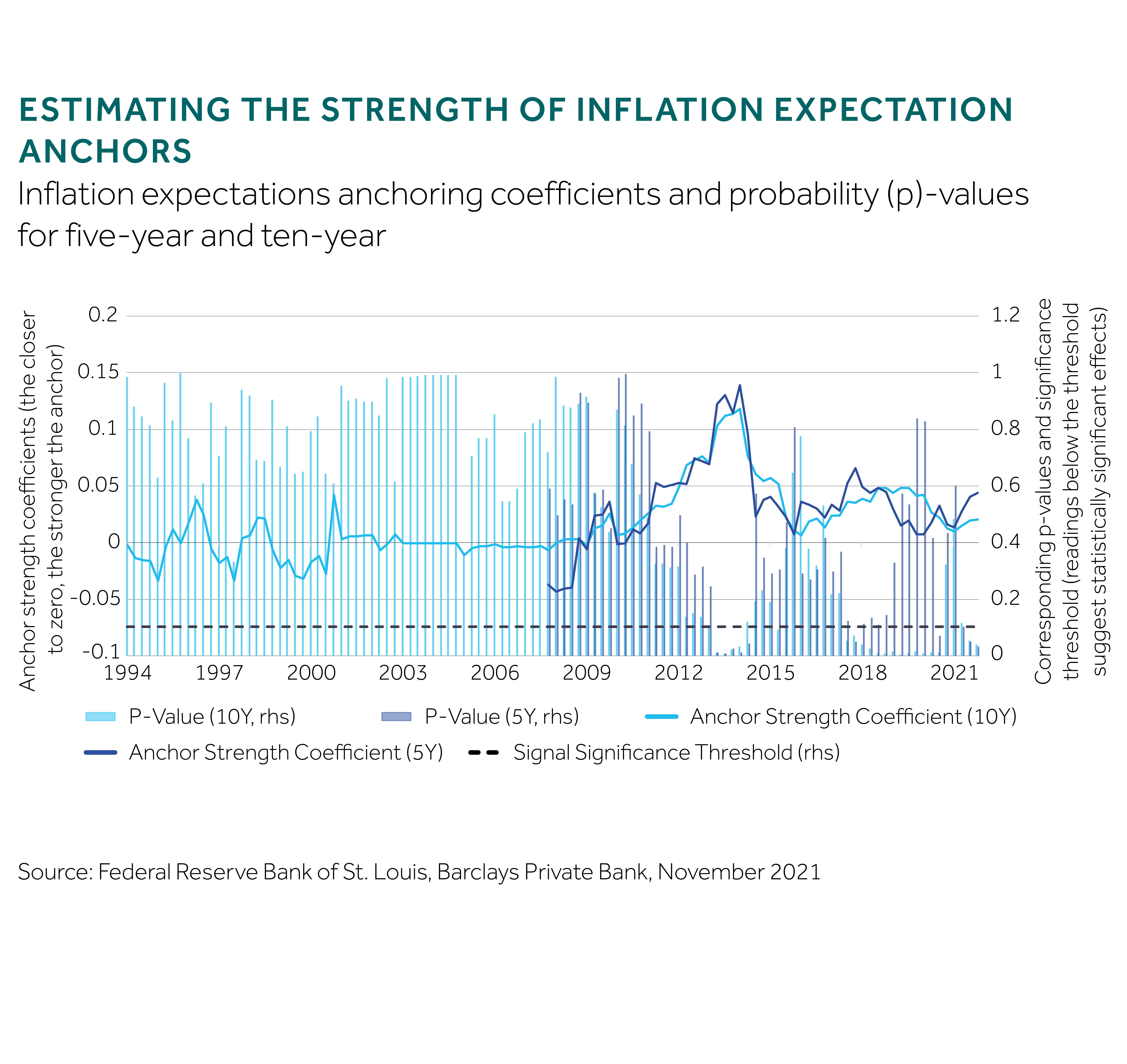Moderate weakening in anchors started before 2021
As indicated by the high p-values and low coefficients, inflation expectations were very firmly anchored between 1994 and 2012 before dipping, then reaffirmed in 2015 before weakening again by surprise prints in 2018.
The recent weakening compares to estimates seen in the move started in 2018, when expectations fell by 30 basis points. Though inflation surprises were much more extreme in size, the subsequent recalibration of expectations was proportional.
One likely reason for the gradual weakening of anchors since 2012 lies in the US Federal Reserve’s (Fed) balance sheet, which has become another variable for inflation considerations. Given its expansion to gargantuan size since the financial crisis, anchors may be recalibrated more frequently as the balance sheet shrinks.
Anchors dragging back and forth
On the basis of the proportional reaction of expectations up to surveys taken in the November 2021 for the fourth quarter, and our own view of inflation receding to more manageable levels towards the end of the year, the Fed should not need to rush rate rises. However, CPI continued to surprise to the upside, which may have added dynamic to the de-anchoring process.
A significant de-anchoring of expectations could lead to vastly different outcomes, depending on the stance the policymakers take. The central bank could reinforce the anchor with rigorous interventions. Alternatively, it may let inflation expectations, and realisations, spiral up before stepping on the monetary brakes.
It seems unlikely that the Fed will stand by and watch inflation get too out of hand. While many market participants, including the US Treasury, could profit from higher inflation, the prospect of runaway inflation that requires more abrupt stopping seems very unattractive.
US phenomenon only?
So far, our focus has been on US inflation expectations. Surveys for long-term inflation expectations by the European Central Bank also show an upward shift in forecasts. For the eurozone, however, long-term expectations used to be anchored around 1.9%, then fell in 2019, before only returning to the old anchor value with the recent recalibration seen in many countries. For the UK, survey-based measures of inflation expectations by forecasters have risen, but not as dramatically as seen in America.
While some cost-push factors are global, the context in which these inflation surprises have come in is not. We have argued before that the US is leading this economic recovery, in part due to the aggressiveness of the monetary and fiscal stimulus in the pandemic. Growth tends to be slower in other developed markets. Therefore, domestic drivers of inflation are, like the recovery, building up more gradually.




